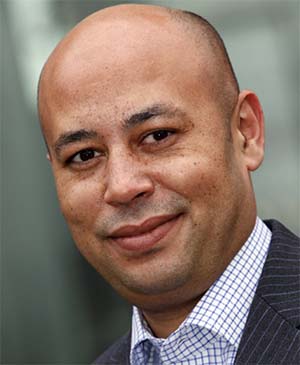An increasingly rapid pace of innovation is driving forward technological advances in the enterprise at an unprecedented rate, meaning that workforce dynamics are set to change drastically in the coming years.
 By Ronald Ravel, Director B2B South Africa, Toshiba South Africa
By Ronald Ravel, Director B2B South Africa, Toshiba South Africa
Perhaps the most noticeable and tangible example of this so far is the realisation of mobile working on a global scale, with the workplace often no longer just one set location. And when we talk about the workplace of the future, it is mobility which will continue to dominate and alter the ways in which organisations and their employees function. But what are the catalysts behind this new era of mobility, and where will it take our businesses?
A new era of mobility
According to IDC, cloud now accounts for almost half of worldwide IT infrastructure spending. The continued adoption of cloud computing is a core driving factor behind enterprise mobility, with organisations turning to both public and private clouds in order to enhance organisational productivity and connectivity in the age of broadband and 4G.
Yet the arrival of 5G is set to fuel mobility further, not only increasing cellular network speed, but also capacity, which will enable more workers to go mobile with unhindered speed and connectivity. Workforces will benefit from faster download and upload speeds, lower latency, and the ability to run greater capacity applications simultaneously – meaning they can perform more heavy-duty tasks remotely.
Acting as a first port of call for the data produced by IoT devices, mobile edge computing processes information on location for real-time insight while filtering mission-critical data to the cloud for deeper analysis without overwhelming IT infrastructures. Devices which possess the ability to process data on the edge will become an increasingly central part of the workforce of the future as companies look to reduce strain on their cloud services, while at the same time ensure productivity and security across an extended IT perimeter.
Through the looking glass of IoT
Of course, such IoT solutions themselves will also shape the workforce of the future in transforming the ways in which they perform their jobs – in particularly within industries reliant on field-based and frontline workers. This year has already seen the arrival of business-targeted IoT devices such as Assisted Reality (AR) smart glasses which – by running on Windows – are easily integrated into existing IT infrastructures and provide hands-free working capabilities to employees.
For sectors ranging from engineering and logistics to healthcare and security, these solutions not only enable greater mobility, but also create new and more efficient activities for staff. Take for example workers on the manufacturing line, who can use smart glasses to access and overlay highly-detailed specifications or instructions in real-time, ensuring greater manufacturing precision, reduced errors, and a more efficient overall process.
Securing the future
With the rise of IoT, and resulting data proliferation, the workforce of the future will also have to be more secure than ever before. This, more than anything, is the key concern for IT leaders who need to create a secure network perimeter across an ever-increasing surface area, and in the face of a constantly developing cyber-crime threat.
SonicWall research revealed a 275 per cent annual increase in the number of encrypted threats, as well as a 101.2 per cent rise in the number of ransomware variants in 2017 – to give just a couple of examples. As such, it’s no surprise that 62 per cent of Europe’s IT decision makers regard data security as a key IT investment priority over the next 12 months, according to Toshiba.
This means that organisations must ensure their future workforce is better educated about IT protocols and regulation, while also equipping them with solutions which offer robust protection from the increasing guile of cyber criminals – from laptops with built-in biometric and encryption tools, to solutions like mobile edge computing which can identify and isolate threats before they reach the network core.
We’re now entering a professional landscape in which workforces will be able to accumulate, analyse and act on data – itself collected in more diverse and convenient locations – and use that to create further competitive advantages and revenue streams. Within such an environment, the future workforce must continue to prioritise security above all else, while at the same time learn to embrace new skills and capabilities delivered by IoT solutions which can drive new levels of digital transformation across all industries.
